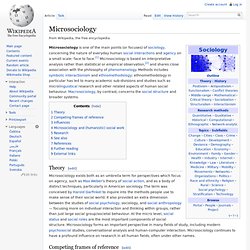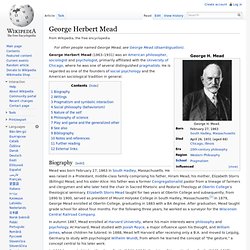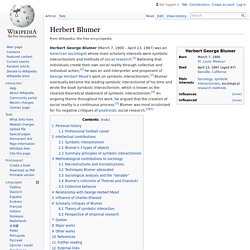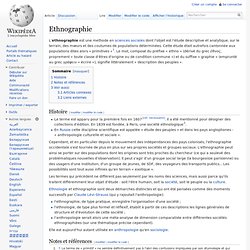

Tom shibutani symbolic interaction theory. Erving Goffman. Anne Ancelin Schützenberger. Un article de Wikipédia, l'encyclopédie libre.

Pour les articles homonymes, voir Ancelin. Anne Ancelin Schützenberger, née le à Moscou, est une psychologue française, également psychothérapeute et professeur émérite à l'université de Nice Sophia Antipolis, où elle a dirigé pendant une vingtaine d'années le laboratoire de psychologie sociale et clinique. Elle est surtout connue du grand public pour ses apports dans le champ de la psychogénéalogie, avec son ouvrage Aïe, mes aïeux ! Publié en 1993[1] et en 2007 Psychogénéalogie : Guérir les blessures familiales et se retrouver soi (Paris, Payot). Biographie[modifier | modifier le code] Anne Ancelin Schützenberger est née le à Moscou, mais ne souhaiterait révéler ni la date exacte ni le lieu de sa naissance par crainte des astrologues[2].
Paul Watzlawick. Un article de Wikipédia, l'encyclopédie libre.

Paul Watzlawick, né le à Villach (Autriche) et mort le à Palo Alto (Californie) est un théoricien dans la théorie de la communication et le constructivisme radical, membre fondateur de l'École de Palo Alto. Il fut à la fois psychologue, psychothérapeute, psychanalyste jungien et sociologue. Ses travaux ont porté sur la thérapie familiale et la psychothérapie générale. Biographie[modifier | modifier le code] Watzlawick termine ses études secondaires en 1939 dans sa ville natale de Villach.
Il obtient un poste pour les Nations unies en Italie. Kinésique. Sciences de l'information et de la communication. Symbolic interactionism. Symbolic interactionism is a sociological perspective that is influential in many areas of the sociological discipline.

It is particularly important in microsociology and social psychology. Symbolic interactionism is derived from American pragmatism and particularly from the work of George Herbert Mead. Herbert Blumer, a student and interpreter of Mead, coined the term "symbolic interactionism" and put forward an influential summary of the perspective: people act toward things based on the meaning those things have for them; and these meanings are derived from social interaction and modified through interpretation.
[citation needed] Sociologists working in this tradition have researched a wide range of topics using a variety of research methods. History[edit] Microsociology. Theory[edit] Microsociology exists both as an umbrella term for perspectives which focus on agency, such as Max Weber's theory of social action, and as a body of distinct techniques, particularly in American sociology.

The term was conceived by Harold Garfinkel to inquire into the methods people use to make sense of their social world. It also provided an extra dimension between the studies of social psychology, sociology, and social anthropology — focusing more on individual interaction and thinking within groups, rather than just large social group/societal behaviour. At the micro level, social status and social roles are the most important components of social structure. Microsociology forms an important perspective in many fields of study, including modern psychosocial studies, conversational analysis and human-computer interaction.
Competing frames of reference[edit] Social psychology. Social psychologists therefore deal with the factors that lead us to behave in a given way in the presence of others, and look at the conditions under which certain behavior/actions and feelings occur.

Social psychology is concerned with the way these feelings, thoughts, beliefs, intentions and goals are constructed and how such psychological factors, in turn, influence our interactions with others. In addition to the split between psychology and sociology, there has been a somewhat less pronounced difference in emphasis between American social psychologists and European social psychologists. As a broad generalization, American researchers traditionally have focused more on the individual, whereas Europeans have paid more attention to group level phenomena (see group dynamics).[3][page needed]
George Herbert Mead. George Herbert Mead (1863–1931) was an American philosopher, sociologist and psychologist, primarily affiliated with the University of Chicago, where he was one of several distinguished pragmatists.

He is regarded as one of the founders of social psychology and the American sociological tradition in general. Herbert Blumer. Herbert George Blumer (March 7, 1900 – April 13, 1987) was an American sociologist whose main scholarly interests were symbolic interactionism and methods of social research.[1] Believing that individuals create their own social reality through collective and individual action,[2] he was an avid interpreter and proponent of George Herbert Mead’s work on symbolic interactionism.[3] Blumer eventually became the leading symbolic interactionist of his time and wrote the book Symbolic Interactionism, which is known as the clearest theoretical statement of symbolic interactionism.[4] An ongoing theme throughout his work, he argued that the creation of social reality is a continuous process.[2] Blumer was most scrutinized for his negative critiques of positivistic social research.[3][5] Personal history[edit] Blumer was born March 7, 1900 in St.

Louis, Missouri. He grew up in Webster Groves, Missouri, with his parents. Charles Cooley. Charles Horton Cooley (August 17, 1864 – May 7, 1929) was an American sociologist and the son of Thomas M.

Cooley. He studied and went on to teach economics and sociology at the University of Michigan, and he was a founding member and the eighth president of the American Sociological Association. He is perhaps best known for his concept of the looking glass self, which is the concept that a person's self grows out of society's interpersonal interactions and the perceptions of others. Biography[edit] Charles Horton Cooley as a young man. Mind, Self and Society. Ethnographie. Un article de Wikipédia, l'encyclopédie libre.

L’ethnographie est une methode en sciences sociales dont l'objet est l'étude descriptive et analytique, sur le terrain, des mœurs et des coutumes de populations déterminées. Cette étude était autrefois cantonnée aux populations dites alors « primitives »[1]. Le mot, composé du préfixe « ethno » (dérivé du grec έθνος, proprement « toute classe d'êtres d'origine ou de condition commune ») et du suffixe « graphie » (emprunté au grec γράφειν « écrire »), signifie littéralement « description des peuples ».
Ray Birdwhistell. Un article de Wikipédia, l'encyclopédie libre.

Ray L. Yves Winkin. Un article de Wikipédia, l'encyclopédie libre. Yves Winkin, né le à Verviers (Belgique), est professeur des universités en sciences de l'information et de la communication. Spécialiste de la "nouvelle communication", de l'« anthropologie de la communication » et du sociologue Erving Goffman, il a enseigné à l'Université de Liège et à l'École normale supérieure de Lyon (ENS de Lyon) avant de rejoindre le Conservatoire national des arts et métiers (CNAM) de Paris.
Biographie[modifier | modifier le code] Il a fait des études à l'Université de Liège (licence [1976] et doctorat [1982] en "Information et arts de diffusion") et à l'Université de Pennsylvanie (Annenberg School for Communication : M. A. [1979], où il rencontre Erving Goffman et Ray Birdwhistell. Symbolic Interaction Theory. The term ‘‘symbolic interactionism’’ was invented by Blumer (1937) to describe sociological and social psychological ideas he presented as emanating directly from Mead, especially but not exclusively in Mind, Self, and Society (1934). ‘‘Symbolic interaction theory’’ is a term that is related to those ideas, though not necessarily in the specific forms presented by Blumer or Mead.
Fundamental Imagery The fundamental character of symbolic interactionist ideas is suggested by the theoretical proposition that the self reflects society and organizes behavior and by related imagery that addresses the nature of society and the human being, the nature of human action and interaction, and the relationship between society and the person. Symbolic Interaction Theory. Symbolic Interaction Theory.